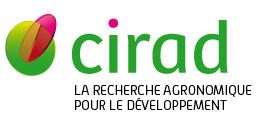Partial migration links local surface-water management to large-scale elephant conservation in the world's largest transfrontier conservation area
Tshipa A., Valls-Fox H., Fritz H., Collins K., Sebele L., Mundy P.J., Chamaille-Jammes S.. 2017. Biological Conservation, 215 : p. 46-50.
Successful conservation of large mammals requires vast areas to maintain viable populations. This often requires to embrace large-scale approaches that extend beyond the borders of formally protected areas. However, the quality of the scientific knowledge about animal movement across large conservation areas vary, and could limit the effectiveness of conservation efforts. Here we used GPS tracking to conduct the first study of large-scale movements of African elephants (Loxodonta africana) in Hwange NP (Zimbabwe), which is an unfenced park part of the Kavango-Zambezi Transfrontier Conservation Area, the world's largest terrestrial conservation area. We show that some, but not all, elephants migrate seasonally, with wet- to dry-season movements linked to the provision of water in Hwange NP. The distance between the most distant locations of individual elephants reaches 260 km. In this partial migration system influenced by management practices, over 20% of the elephants have wet-season ranges established in Botswana, outside of protected areas in private or communal wildlife management areas. Our results call for the urgent drafting of a regional action plan, involving all stakeholders identified by our study and their neighbours, to predict and react to what would happen if water provision in Hwange NP was to suddenly change because of management practices or extreme climate change. Beyond this critical conservation issue for the world's largest elephant meta-population, our results also highlight the relevance of large-scale conservation areas combined with integrative planning involving national wildlife management institutions and the private and communal sector.
Mots-clûˋs : ûˋlûˋphant d'afrique; conservation des ressources; gestion de la faune et de la flore sauvages; migration; changement climatique; zimbabwe; botswana
Documents associûˋs
Article (a-revue û facteur d'impact)
